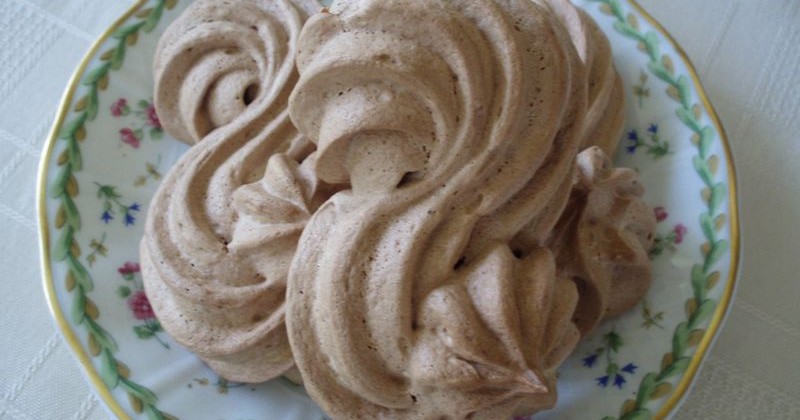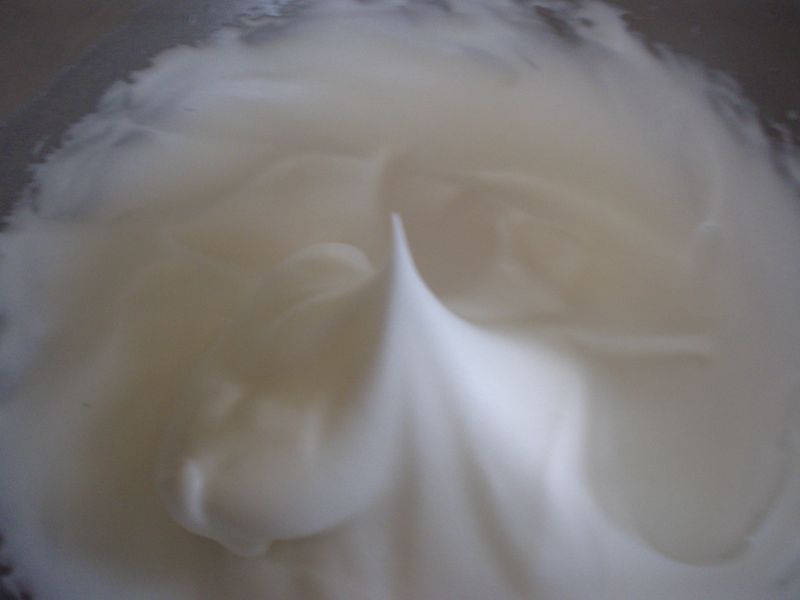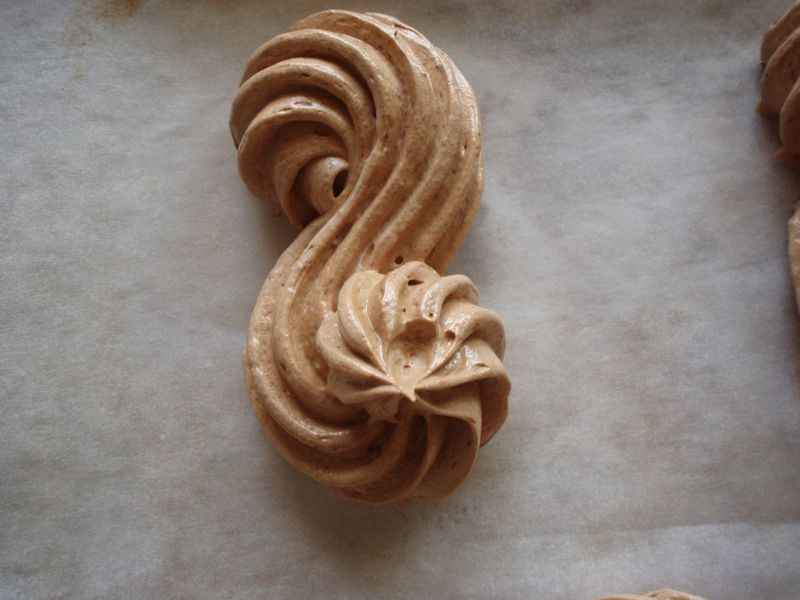Great Passover Sweet Treats- Part 1
Chocolate “S” ‘s
(with a nod to Rose Levy Beranbaum)
Line 2 baking sheets with parchment, and have your pastry bag fitted with a number 9 tip and ready to go.
Melt:
2 oz. unsweetened chocolate
In a small bowl stir:
2 t. instant espresso powder (thanks to Rose Levy Beranbaum for this step of adding instant espresso- helps to cut the excessive sweetness of meringues)
with 1/2 t. water to dissolve
In a small ( i.e. 1 qt.) saucepan stir together:
1 1/4 C. sugar
and
1/3 C. water
until dissolved over low to medium heat. When the sugar is dissolved, stop stirring, and continue to let the syrup cook at low heat.
Meanwhile, place in the bowl of an electric stand mixer:
1/2 C. large egg whites, @ 4 whites
1/2 t. cream of tartar
Beat with the whisk attachment on low speed until egg whites are foamy. I find with my Kitchenaid mixer that I have to lift the bowl up a bit, until the whites start foaming, as the whip doesn’t quite meet the bottom of the bowl.
Slowly add:
3 T. of sugar
to beating whites, and continue beating until stiff peaks form when the beater is raised.The point is to have the egg whites and sugar syrup ready at the same time, so if your egg whites are reach the stiff peak before the syrup is ready, lower the speed to its lowest point, enough to keep the eggs moving, but not off completely.
Increase the heat under the sugar syrup, and boil until the syrup reaches 240 degrees on a candy thermometer. I remove the syrup a couple of degrees before 240, as the syrup continues to cook when removed from the heat.
Pour the syrup slowly and the egg whites as they beat, avoiding as much as possible pouring it over the whisk, as the syrup will spin out to the side of the bowl. When all of the syrup has been poured over the beating whites (use a rubber spatula to get that last bit of syrup in the bowl), turn the speed to high and beat for 1 minute.
Stop the mixer, and pour the melted chocolate on one side of the whites, and the espresso powder on the other (the water in the espresso mixture may cause the chocolate to “seize”), and blend in by hand with the whisk, finishing if necessary with a rubber spatula.
Transfer the meringue to your waiting pastry bag . Holding the tip about a 1/2″ above the sheet ( to avoid flattening your rosette as you pipe), pie an “S” by piping one rosette, then curving and swooping down to finish with a backward rosette. Stop the pressure on the bag and pull up to complete, leaving a cute tiny peak at the base of the rosette.
Rose Beranbaum bakes the meringues at 350 degrees for 10 minutes, then turns the oven down to 200 degrees for another 20 minutes, but in culinary school we baked them for 10-15 minutes at 350. The trick is making sure they are dried out enough (lift a meringue to see if they can be easily removed from the sheet) and that they don’t brown form too high a heat in the process- so a temperature adjustment maybe in order. Remove from the oven and let the meringues cool completely, placing the baking sheet on a wire rack. They can be made a week ahead of time, but I like them to make them no more than a couple of days before serving, as they dry out the longer you keep them, and I like to retain a bit of a chewy inside.
Yields @ 2 dozen
Tips for success:
1) Egg whites should be at cool room temperature for maximum volume (@ 60-65 degrees)
2) Every tool you use (bowl, whisk, even hands) should be completely free of grease, as the tiniest speck can deflate your whipping whites.
3) Don’t crowd the meringues on the sheet- I place about 10 3″ cookies per sheet.
3) Don’t worry if you can’t get both baking sheets in the oven at once. The meringues actually benefit from sitting and drying out a bit before baking.








